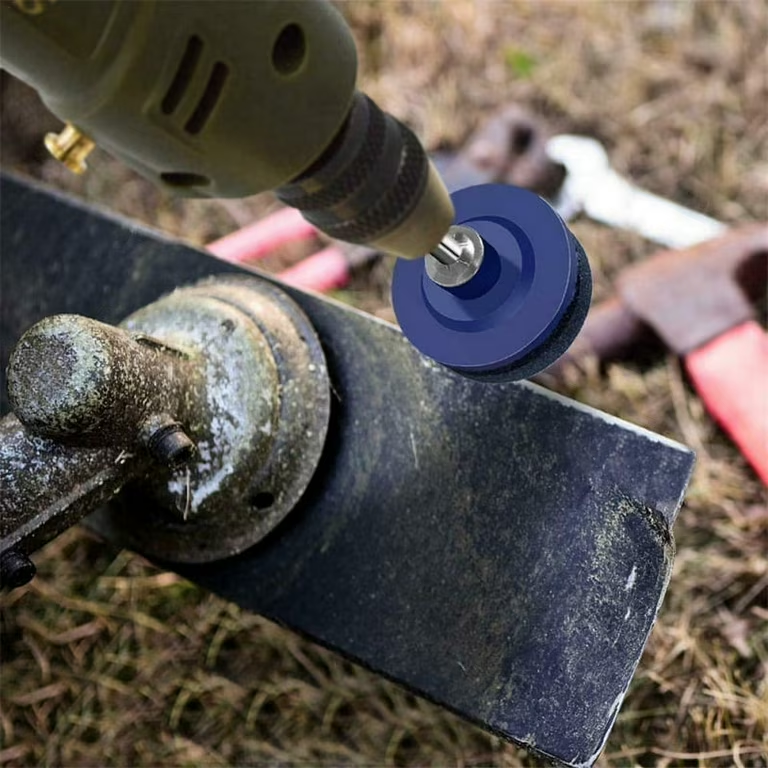
How to Start Lawnmower: A Step-by-Step Guide
Safety Precautions Before Starting Your Lawnmower
Before you begin the process of starting your lawnmower, it’s crucial to ensure you’re taking appropriate safety measures. Safety not only prevents accidents but also prolongs the lifespan of your lawnmower.

Wear Appropriate Clothing and Protective Gear
When it comes to handling a lawnmower, safety should always be your top priority. One of the most important steps in ensuring your safety is to dress appropriately for the task. Always opt for long pants, as they provide an additional layer of protection against any debris that might be thrown up by the mower. This can include small rocks, twigs, or other objects that could potentially cause cuts or scrapes if they come into contact with exposed skin.
In addition to long pants, it is crucial to wear closed-toe shoes. Open-toed footwear, such as sandals or flip-flops, offers no protection for your feet and can leave you vulnerable to serious injuries. Closed-toe shoes, on the other hand, will help shield your feet from any flying debris, providing a barrier that can prevent painful and potentially dangerous accidents.
Gloves are another essential piece of protective gear when operating a lawnmower. They not only protect your hands from sharp edges and moving parts but also provide a better grip, reducing the risk of the mower slipping out of your hands. Choose gloves that are both durable and comfortable, as they will need to withstand the rigors of the job while allowing you to maintain dexterity and control.
Safety goggles
Safety goggles are a must-have to protect your eyes from potential flying particles. As the lawnmower blades cut through grass, they can kick up small objects, which, if they hit your eyes, could cause serious damage. Safety goggles create a barrier that prevents these particles from reaching your eyes, ensuring that you can see clearly and safely throughout the mowing process.
By taking these precautions, you significantly reduce the risk of injury and ensure that you can start and operate the lawnmower safely. Always remember that a few moments spent preparing and dressing appropriately can make a big difference in keeping you safe and preventing accidents.
Check the Lawnmower for Loose Parts or Damage
Before starting your lawnmower, perform a thorough check for any loose parts or damages. Ensure all nuts and bolts are tightened, and there is no visible damage that might affect the machine’s operation. This check prevents accidents and malfunctions, which could lead to more significant issues or personal injury.
Preparing the Lawnmower for Use
Before you start your lawnmower, preparation is key. A well-prepared lawnmower ensures a smooth start-up and operation. Follow these steps to prepare your machine properly.
Check Oil and Fuel Levels
First, check the oil level in your lawnmower. Low oil can cause engine damage and poor performance. Pull out the dipstick, wipe it clean, insert it back in, and then pull it out again to check the level. If needed, add oil up to the marked ‘full’ line. Next, ensure your lawnmower has enough fuel. Use fresh gasoline for best results, as old gas can gum up the engine. If you’re using a mixture of oil and gasoline, follow the manufacturer’s recommended ratio to avoid engine issues.
Ensure the Cutting Area is Clear of Obstacles
Look over the area you plan to mow. Remove rocks, sticks, or any debris that could damage the blades or become dangerous projectiles. Check for hidden obstacles in tall grass. Clearing the area prevents damage to your lawnmower and ensures safety while mowing. With these simple steps, you’re now ready to start your lawnmower correctly and safely, following the tips on how to start lawnmower provided in the following sections of this guide.
The Correct Way to Start Various Types of Lawnmowers
Starting your lawnmower correctly is crucial for its performance and longevity. This section covers various types of lawnmowers and the specific steps for starting each one safely and efficiently.
Starting a Push Lawnmower
- Check the Engine: Ensure the engine switch is in the ‘on’ position.
- Prime the Engine: Press the primer button three to five times to enhance starting.
- Pull the Starter Cord: Hold the handle firmly and pull the starter cord briskly.
Starting a Riding Lawnmower
- Sit Comfortably: Ensure you are seated properly in the lawnmower.
- Engage the Brake: Set the parking brake before starting the engine.
- Turn the Key: Insert the key and turn it to start the engine.
Each type of lawnmower requires specific steps to ensure a safe and effective start. By following these instructions, you can start your lawnmower smoothly and prevent damage.

Troubleshooting Common Starting Issues
When a lawnmower refuses to start, it can be due to various issues. This section will guide you through common starting problems and how to resolve them.
Addressing Flooded Engine Problems
A flooded engine is a common issue that prevents a lawnmower from starting. Here’s how you can address it:
- Do Not Start the Engine: Avoid trying to start the engine for a few minutes.
- Remove Excess Fuel: Remove the spark plug and pull the starter cord to evaporate excess fuel.
- Dry the Spark Plug: Clean and dry the spark plug before replacing it.
- Wait and Restart: Wait a few more minutes, then try starting the lawnmower again using the correct procedure.
Resolving Electrical Issues in Lawnmowers
Electrical problems might seem daunting, but they can often be handled with some basic steps:
- Check the Battery: Ensure the battery is fully charged and correctly connected.
- Inspect the Fuses: Locate and check the fuses for any signs of damage or wear.
- Examine Wires and Connections: Look for any loose, frayed, or disconnected wires.
- Secure Connections: Tighten any loose connections and replace damaged wires if necessary.
By addressing these common problems, you enhance your chances of starting your lawnmower without delays, ensuring you’re back to mowing efficiently and safely.
Maintenance Tips to Keep Your Lawnmower in Good Condition
Keeping your lawnmower in good condition ensures it starts easily and lasts longer. Simple maintenance practices can make a big difference in its performance.
Regular Cleaning and Storage Practices
After each use, clean the lawnmower to remove grass clippings and debris. This prevents rust and keeps blades sharp. Always store your lawnmower in a dry, sheltered area to protect it from weather damage. Empty the fuel tank before storage to avoid gumming up the engine.
Schedule Periodic Professional Servicing
Just like any machine, your lawnmower needs professional servicing. Set a schedule for periodic check-ups. Experts can handle complex tasks like blade sharpening, oil changes, and filter replacements. Regular servicing spots small problems before they become big issues. This keeps your lawnmower running smoothly for years.

Advanced Tips for Optimal Lawnmower Performance
To achieve the best performance from your lawnmower, consider these advanced tips.
Adjusting Cutting Height for Different Lawn Types
Different lawn types require various cutting heights for optimal growth and health. Here’s how to adjust it:
- Identify Your Lawn Type: Different grass types like Bermuda, Fescue, or St. Augustine have unique needs.
- Check Manufacturer’s Recommendations: Refer to your lawnmower’s manual for specific height settings.
- Adjust the Blade: Modify the blade height using the adjustment lever usually located near the wheels.
Regular adjustment ensures your lawn remains healthy and reduces weed growth. Remember to switch off the lawnmower before making any adjustments.
Techniques for Efficient Lawnmowing
Efficient lawnmowing saves time and energy. Follow these strategies:
- Mow in Overlapping Patterns: This ensures no spots are missed and grass is cut evenly.
- Alternate Mowing Directions: Change your mowing pattern each time. This prevents grass blades from leaning in one direction and promotes even growth.
- Keep Blades Sharp: Sharp blades cut cleanly and efficiently. Check and sharpen them regularly.
By applying these techniques, you can maintain your lawn in prime condition while maximizing your lawnmower’s performance.












Leave a Reply